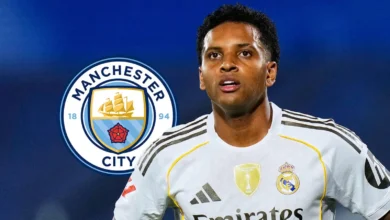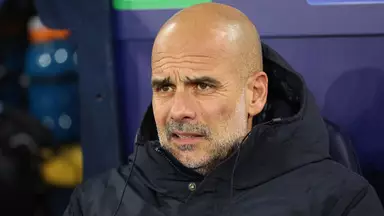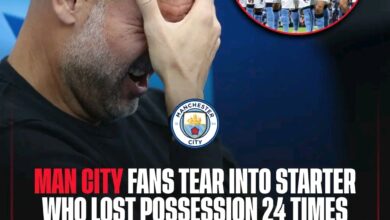Dembele’s Bold Claim: Why Liverpool’s Luis Suarez Was a Superior Finisher to Manchester City’s Erling Haaland

In the world of football, debates about who possesses the superior finishing ability can spark passionate discussions among fans, pundits, and players alike. Recently, such a debate has emerged from an unexpected source: Ousmane Dembele, the Paris Saint-Germain winger who has established himself as one of the most formidable attacking talents in contemporary football.
Dembele’s journey to football stardom has been nothing short of remarkable. The French international has transformed from a promising young talent into a world-class performer who now stands among the elite players of his generation. His recent performances for PSG have been particularly noteworthy, culminating in what many consider to be a career-defining season that saw the Parisian club capture the Champions League trophy.
The significance of this achievement cannot be overstated. PSG’s Champions League triumph represents the culmination of years of investment and ambition, and Dembele played a pivotal role in making this dream a reality. His performances throughout the tournament showcased a player at the peak of his powers, combining pace, skill, and clinical finishing to devastating effect. This stellar campaign has not only elevated his status within the game but has also positioned him as a serious contender for football’s most prestigious individual honor.
The Ballon d’Or represents the pinnacle of individual achievement in football, and Dembele’s inclusion among the frontrunners speaks volumes about his current form and influence. While the award has traditionally been dominated by players like Lionel Messi and Cristiano Ronaldo in recent years, the emergence of new talents like Dembele signals a changing of the guard in world football. His ability to perform on the biggest stages, combined with his technical brilliance and match-winning capabilities, has earned him recognition among the sport’s elite
The conversation about finishing ability emerged during what appeared to be a lighthearted interaction on social media. The Ballon d’Or’s official TikTok page featured Dembele in a series of hypothetical choices, asking him to select between various attributes of different players. This format, while entertaining, often reveals genuine insights into how professional players perceive their peers and predecessors.
Among the various comparisons presented to Dembele was the choice between Luis Suarez’s finishing ability and that of Erling Haaland. This particular question was especially intriguing given the contrasting styles and eras of the two strikers. Suarez, the Uruguayan maestro who made his mark at Liverpool before moving to Barcelona and later Atletico Madrid, represents a different breed of striker compared to Haaland, the Norwegian goal machine who has taken the Premier League by storm with Manchester City.
Dembele’s decision to favor Suarez over Haaland was both surprising and thought-provoking. In an era where Haaland’s goal-scoring exploits have dominated headlines and shattered records, choosing the former Liverpool striker required a deeper appreciation of the nuances of finishing as an art form. This choice suggests that Dembele values technique, creativity, and adaptability over pure goal-scoring statistics.
To understand Dembele’s reasoning, it’s essential to examine what made Luis Suarez such a special finisher during his time at Liverpool and beyond. Suarez’s approach to goal-scoring was characterized by an almost supernatural ability to find the net from impossible positions and situations. His finishing was not merely about power or placement; it was about innovation, instinct, and an uncanny ability to conjure goals from nothing.
During his time at Anfield, Suarez developed a reputation for scoring goals that defied logic and expectation. Whether it was his audacious chips over goalkeepers, his ability to finish with either foot from any angle, or his knack for finding space in crowded penalty areas, Suarez possessed a finishing repertoire that was both diverse and devastating. His creativity in front of goal was perhaps unmatched, often leaving defenders, goalkeepers, and spectators alike in awe of his ingenuity.
The Uruguayan’s finishing ability was particularly evident during his remarkable 2013-14 season with Liverpool, when he nearly led the club to their first Premier League title in over two decades. That campaign saw Suarez score goals of every conceivable variety, from thunderous strikes from outside the box to delicate finishes that required the softest of touches. His ability to score in crucial moments and against top-level opposition demonstrated not just technical proficiency but also mental strength and composure under pressure.
What set Suarez apart was his ability to create finishing opportunities for himself through his movement, intelligence, and technical skill. He wasn’t simply a player who finished chances created by others; he was a striker who could manufacture goals through his own creativity and persistence. This self-reliance in goal-scoring situations made him an especially dangerous opponent, as defenders could never be certain where the next threat would emerge
In contrast to Suarez’s improvisational approach, Erling Haaland represents a more direct and physically imposing style of finishing. The Norwegian international has taken the football world by storm with his remarkable goal-scoring exploits, first in the Bundesliga with Borussia Dortmund and more recently in the Premier League with Manchester City. His statistics speak for themselves, with goal ratios that surpass even some of the greatest strikers in football history.
Haaland’s finishing ability is characterized by power, precision, and an almost mechanical efficiency in front of goal. His physical attributes – height, strength, and pace – combine with exceptional technical ability to make him a formidable presence in the penalty area. When presented with a clear sight of goal, Haaland’s conversion rate is remarkably high, suggesting a level of consistency that is rare even among elite strikers.
The Manchester City striker’s impact on the Premier League has been immediate and profound. His goal-scoring records in his debut season were nothing short of extraordinary, breaking numerous milestones and establishing new benchmarks for striker performance in England’s top flight. His ability to find the net with both feet, his head, and from various distances demonstrates a well-rounded finishing ability that has been honed through years of dedicated practice and natural talent.
What makes Haaland particularly effective is his positioning and movement within the penalty area. His understanding of space and timing allows him to be in the right place at the right time consistently, maximizing the number of scoring opportunities he receives. This positional intelligence, combined with his clinical finishing, has made him one of the most feared strikers in world football.
When examining the Premier League statistics of both players, the numbers present a compelling case for Haaland’s superiority as a pure finisher. In 98 Premier League appearances, Haaland has scored 87 goals, averaging 0.89 goals per game. In comparison, Suarez’s 110 Premier League appearances yielded 69 goals, averaging 0.63 goals per game. These figures clearly favor the Norwegian striker in terms of pure goal-scoring efficiency.
However, statistics alone cannot capture the complete picture of a player’s finishing ability. While Haaland’s numbers are undeniably impressive, they reflect not only his individual brilliance but also the superior quality of chances created by Manchester City’s sophisticated attacking system. Playing alongside creative talents like Kevin De Bruyne, Riyad Mahrez, and others, Haaland benefits from a consistent supply of high-quality scoring opportunities.
Suarez, during his time at Liverpool, often had to create his own chances or make the most of limited opportunities. The Liverpool team of 2011-2014, while talented, did not possess the same depth of creative options that Haaland enjoys at Manchester City. This context is crucial when evaluating the relative merits of their finishing abilities, as it highlights the different circumstances under which each player operated.
The assist numbers also tell an interesting story about the different roles these players occupied within their respective teams. Suarez recorded 25 assists in his 110 Premier League appearances, while Haaland has 17 assists in 98 games. While both players contribute to their team’s creative output, Suarez’s higher assist tally suggests a more involved role in the overall attacking play, potentially limiting his pure goal-scoring opportunities.
Dembele’s preference for Suarez’s finishing ability over Haaland’s suggests an appreciation for aspects of goal-scoring that transcend mere statistics. Finishing, at its highest level, is not simply about converting clear-cut chances; it’s about the ability to score when scoring seems impossible, to find solutions when conventional approaches fail, and to demonstrate creativity under the most intense pressure.
Suarez’s finishing was characterized by an almost artistic quality that elevated goal-scoring from a mechanical process to a form of creative expression. His ability to score with the outside of his foot, his bicycle kicks, his volleyed finishes from acute angles, and his improvised chips demonstrated a level of creativity that went beyond conventional finishing techniques. This artistic approach to goal-scoring may be what Dembele finds most appealing, as it represents a philosophy of finishing that values innovation and adaptability.
The psychological aspect of finishing is another dimension where Suarez excelled. His ability to remain calm and creative under pressure, to find solutions when defenses seemed to have closed all avenues to goal, demonstrated a mental fortitude that is rare among strikers. This psychological strength allowed him to score crucial goals in high-pressure situations, often when his team needed him most.
Furthermore, Suarez’s finishing ability was not dependent on specific tactical systems or playing styles. Whether deployed as a central striker, a false nine, or even drifting wide, he maintained his goal-scoring threat through adaptation and intelligence. This versatility in finishing positions and situations may be another factor that influences Dembele’s assessment.
The comparison between Suarez and Haaland also reflects broader changes in modern football tactics and playing styles. Haaland’s success is partly a product of the sophisticated attacking systems employed by top clubs like Manchester City, where detailed tactical preparation and precise passing create optimal scoring opportunities. This systematic approach to creating chances has revolutionized the way strikers operate and has contributed to improved goal-scoring statistics across the game.
However, this tactical evolution has also led to more predictable patterns of play in some respects. While the quality of chances may be higher, the variety and spontaneity that characterized earlier eras of football have sometimes been reduced in favor of efficiency and consistency. Suarez’s era, while still tactically sophisticated, allowed for more individual expression and improvisation, which may have contributed to the creative aspects of his finishing that Dembele admires.
The physical demands of modern football have also changed the requirements for strikers. Haaland’s physical attributes – his height, strength, and pace – are perfectly suited to the modern game, where space is at a premium and physical duels are frequent. Suarez, while certainly not lacking in physical attributes, relied more heavily on technique, intelligence, and creativity to overcome physical challenges.
The environment in which each player developed their finishing skills also plays a crucial role in shaping their respective approaches. Suarez’s formative years in South American football, particularly in Uruguay, emphasized creativity, improvisation, and individual brilliance. This cultural approach to the game encouraged players to find unique solutions to scoring opportunities, leading to the development of his distinctive finishing style.
Haaland’s development, primarily in European football systems known for their tactical discipline and systematic approach, has shaped a more direct and efficient finishing style. While this approach has proven incredibly effective, it represents a different philosophy of goal-scoring that prioritizes consistency and power over creativity and improvisation.
These different developmental backgrounds have created two distinct approaches to finishing, each with its own merits and effectiveness. Dembele’s preference for Suarez’s approach may reflect his own appreciation for the creative and improvisational aspects of football that he incorporates into his own playing style
When considering finishing ability, it’s also important to examine the lasting impact and memorability of goals scored. Suarez’s Liverpool career, though relatively brief, produced numerous goals that remain etched in football folklore. His strikes against Norwich City, his crucial goals in title races, and his ability to score spectacular goals in crucial moments created a legacy that extends beyond mere statistics.
Haaland, while still early in his Premier League career, has already begun creating his own memorable moments. His record-breaking performances and crucial goals in important matches suggest that he too will leave a lasting legacy in football history. However, the longevity and consistency of impact over time remain to be fully evaluated.
The question of legacy also relates to the influence each player has had on the art of finishing itself. Suarez’s creative approach has inspired countless young players to think differently about goal-scoring, encouraging them to experiment with unconventional techniques and approaches. Haaland’s systematic efficiency demonstrates the value of perfecting fundamental finishing skills and positioning, offering a different but equally valid model for aspiring strikers.
Ultimately, Dembele’s choice of Suarez over Haaland as a superior finisher reflects a particular philosophy about what constitutes excellence in goal-scoring. While Haaland’s statistical dominance is undeniable, Dembele’s preference suggests that he values the creative, improvisational, and artistic aspects of finishing that Suarez embodied during his Liverpool career.
This debate highlights the subjective nature of evaluating football ability and the different criteria that can be applied when assessing player performance. Statistics provide one lens through which to view finishing ability, but creativity, adaptability, and the capacity to produce magic in crucial moments offer alternative perspectives on what makes a great finisher.
Both Suarez and Haaland represent excellence in finishing, but they embody different approaches to the art of goal-scoring. Suarez’s creative improvisation and Haaland’s systematic efficiency are both valuable and effective, reflecting the diversity of approaches that can lead to success at the highest level of football.
Dembele’s assessment, coming from a player who has reached the pinnacle of the sport himself, deserves consideration and respect. His insider’s perspective on the game provides valuable insight into how elite players evaluate their peers and predecessors. Whether one agrees with his assessment or not, the debate he has sparked serves to highlight the rich complexity and subjective nature of football excellence.
As both players continue their careers – Suarez in his veteran years and Haaland in his prime – their respective approaches to finishing will continue to influence and inspire future generations of strikers. The ongoing debate about their relative merits will likely persist, serving as a testament to the enduring appeal and complexity of football’s most fundamental skill: the ability to put the ball in the back of the net.














